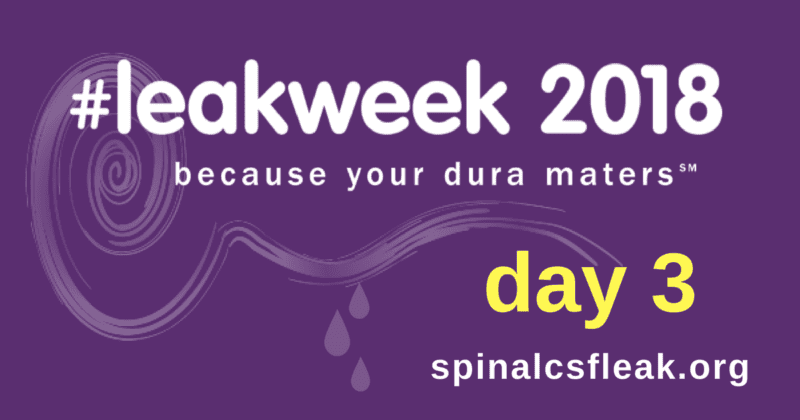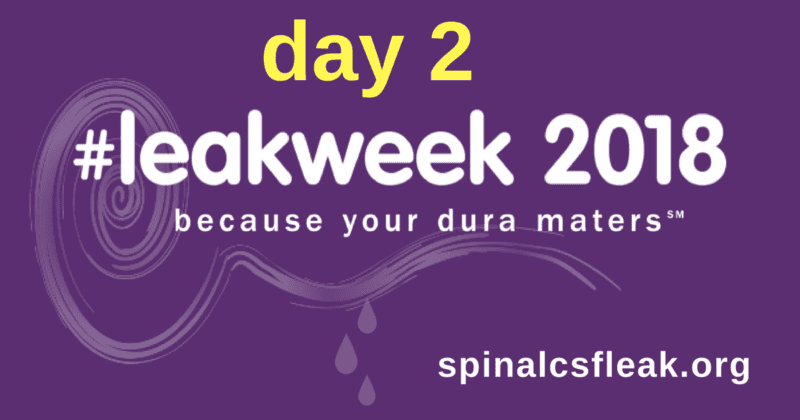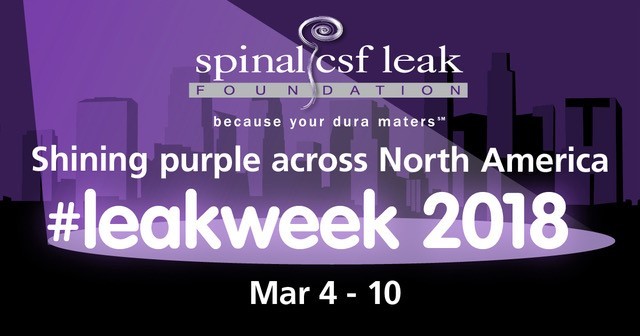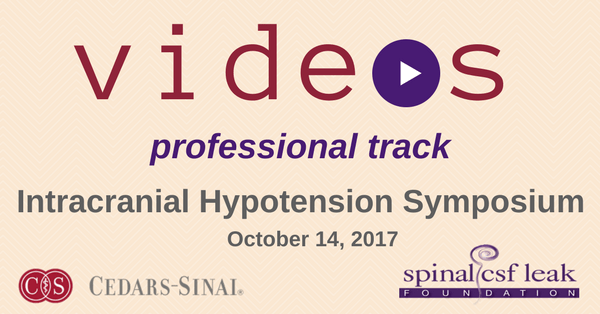Spinal cerebrospinal fluid (CSF) leak is an under-diagnosed cause of disabling daily headache with other neurological symptoms and complications that can happen to anyone. The underlying problem is a hole or tear of the dura mater along the spine, the tough layer that...
Updates from the Spinal CSF Leak Foundation
leakweek 2018 – day 3
This is Day 3 of #leakweek 2018 – because your dura maters℠ Spinal cerebrospinal fluid (CSF) leak is an under-diagnosed cause of disabling daily headache with other neurological symptoms and complications that can happen to anyone. A spinal CSF leak is...
Lianne’s headache story
Delayed diagnosis of intracranial hypotension due to spinal CSF leak remains common. Lianne suffered with debilitating daily headache for 15 years before she was correctly diagnosed and treated. Here is Lianne’s story. Lianne, with Scrappy Doodle, Gus & Codie In...
leakweek 2018 – day 2
This is Day 2 of #leakweek 2018 – because your dura maters℠ Spinal CSF Leak Awareness Week or Leak Week is March 4-10, 2018. Spinal cerebrospinal fluid (CSF) leak is an under-diagnosed cause of disabling daily headache with other neurological symptoms and...
Dr. Schievink explains the dura mater & more
Spinal cerebrospinal fluid (CSF) leak is an under-diagnosed cause of disabling daily headache with other neurological symptoms and complications that can happen to anyone. The underlying problem is a hole or tear of the dura mater, the tough layer that normally holds...
leakweek 2018 – day 1
This is Day 1 of #leakweek 2018 – because your dura maters℠ Spinal CSF Leak Awareness Week or Leak Week is March 4-10, 2018. Spinal cerebrospinal fluid (CSF) leak is an under-diagnosed cause of disabling daily headache with other neurological symptoms and...
Ask the experts LIVE during #leakweek 2018
During #leakweek 2018 because your dura maters℠ we will host 3 ask the expert sessions LIVE There is no registration required, just show up on our Facebook page at the scheduled time, and each of these 3 expert physicians will be ready to answer your...
Wear purple day is March 8
March 8 is the day during #leakweek 2018 to wear PURPLE for Spinal CSF Leak Awareness Did you know that PURPLE is also the color for awareness of all headache disorders? If you have any purple clothing items, time to get them ready. If you don't have any purple...
Shining purple across North America for #leakweek
During #leakweek 2018 March 4 - 10 Landmarks across North America will be shining PURPLE because your dura maters℠ Confirmed landmarks are listed here. Monday March 5, 2018 Pennsylvania State Capitol - Harrisburg, PA US Bank Tower Crown Lights - Los...
10 ways to get involved with #leakweek 2018
Here are 10 ways to get involved with #leakweek 2018 - because your dura maters℠ 1. Check in with us all week on Twitter and Facebook and share tweets and posts. 2. Decorate your home (and/or office) with PURPLE lights or PURPLE bulbs in house lanterns....
#leakweek 2018 is just one month away!
Just one month until #leakweek 2018 : March 4 - 10 #leakweek 2018 because your dura maters℠ No, it isn't a typo. dura mater = the tough layer around the brain and spinal cord that normally holds in the cerebrospinal fluid (CSF) Our theme for #leakweek 2018 is...
Symposium videos from professional track are here!
The videos from the sessions in the professional track of the Intracranial Hypotension Symposium on October 14, 2017 are now available for on-demand viewing. If you were unable to attend, here is your chance to view the presentations. Please share to extend our reach!...












